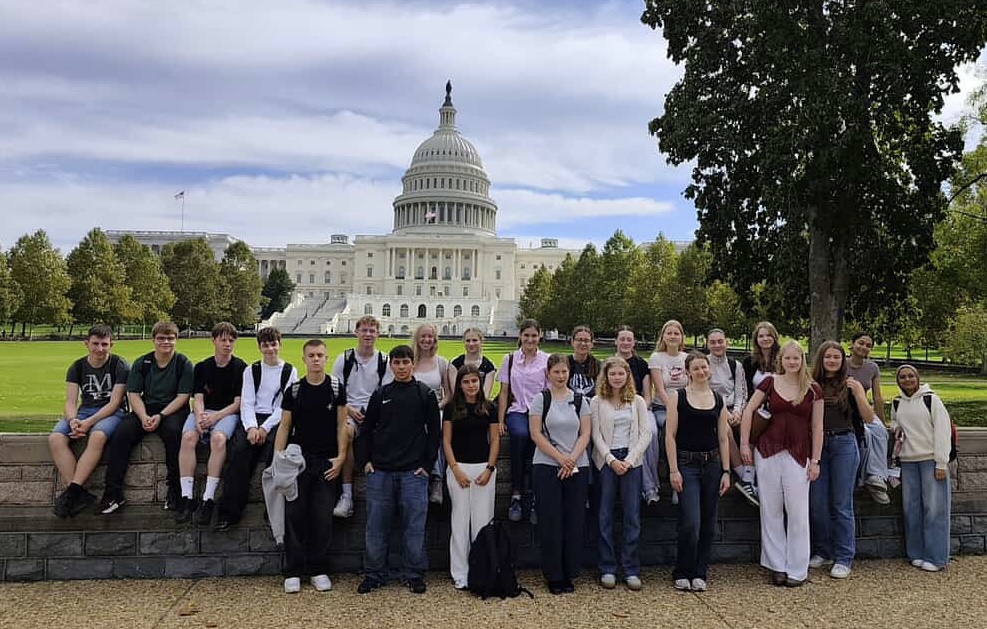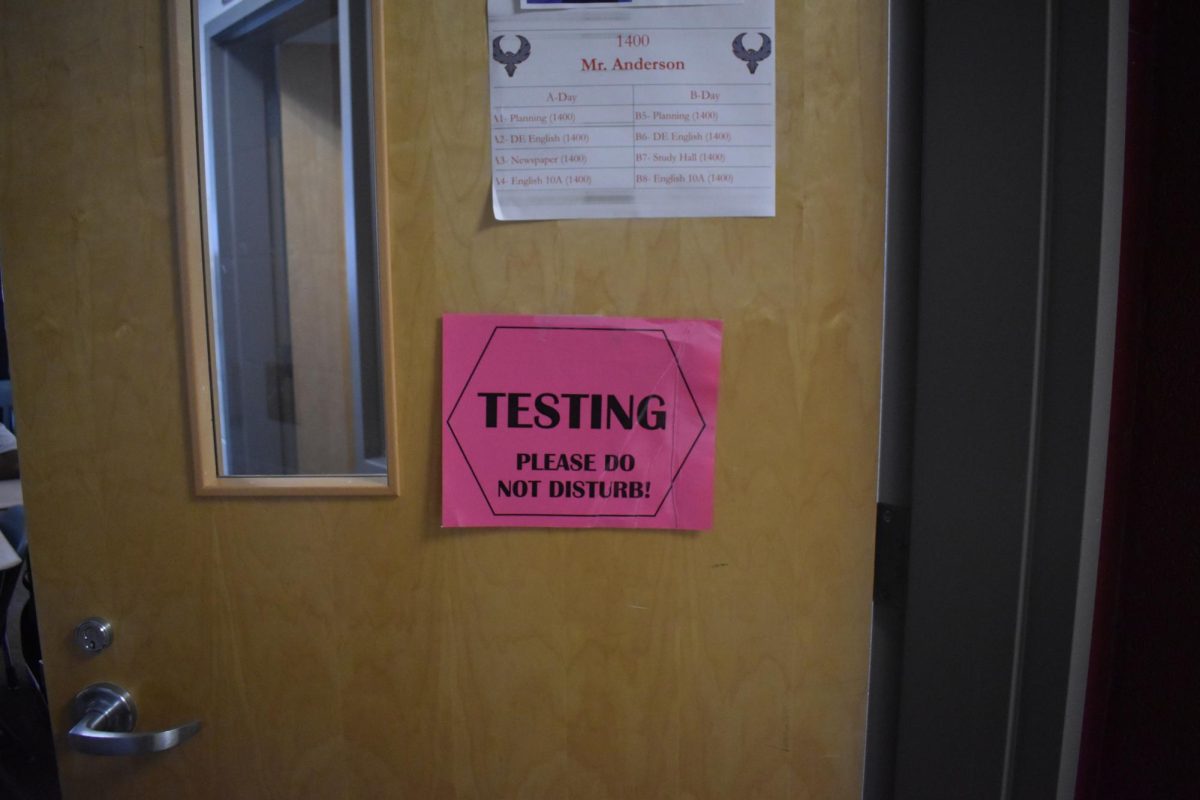2020 was a year of turmoil and for many, terror. With the rise of COVID-19 and the transfer of power from former President Donald Trump to current President Joe Biden, one year felt like 20. But for anyone who missed it, the United States will be getting a do-over — of the political atmosphere, at least.
While a presidential candidate doesn’t become “official” until the summer when they win the vote from the nominating convention, the presumptive nominee is named normally when they have acquired enough delegate’s favor for the official voting in the summer. As the incumbent, or currently seated, president in his first term, Biden is the favored candidate for the nomination from the Democratic party. For the Republicans, it is a little different. Since the seated president doesn’t reside in their party, picking their nominee occurs through primaries and caucuses.
Issues Incoming…
Americans are staring at the ballot and shaking their heads. According to ABC News, 53% of Americans have an unfavorable opinion of Trump, and 55% have an unfavorable opinion of Biden. Historically, this is highly unlikely and it has rarely happened before where both parties are unfavored by over half the sample population.
The trait shared by the two politicians is their lack of youth. Trump comes in at 77 years of age and trailing Biden who is 81 — 82 by the next inauguration, since his birthday is in November. Biden, who currently holds the record for the oldest president, has dealt with numerous concerns about his ability to effectively lead the country, with many of his 2020 voters reneging on their original decision. Between speaking missteps, taking “too long” to verbalize answers, and his overall perceived mental state, 45% of voters think Biden is incapable of doing the job and an additional 26% believe his age makes him ineffective but not incapable (from a poll conducted by the New York Times).
As the world changes at a rapid pace, many constituents want to see the executive leader adapt to those times. This materializes in the numerous conflicts the United States, as a global superpower, has to deal with. Deciding between the two can be compared to choosing the lesser of two evils. On one hand, inflation with food and gas prices reached an all-time high during Biden’s presidency; gas prices were the highest ever reached in the summer of 2022. Trump’s promise to voters revolves around deregulation and lower taxes, effectively negating the so-called “Bidenomics” the current administration swears by.
Domestic policy seems to be the pinnacle of misalignment between the two. Trump has been vocal about his support for the overturning of Roe v. Wade and many, but not all, measures that states have implemented since. Biden has spent a considerable amount of time furthering the affordable healthcare agenda while Trump pledged to repeal the Affordable Care Act, though he claims he wants to replace it with a stronger alternative that has not been detailed. On the issue of crime, both candidates maintain that they want to crack down on crime; however, under the Biden administration, many Americans feel like crime is increasing, according to a survey by Gallup.
International policy is where the two somewhat align, though without Trump being in office some voters don’t know how well he would fare, as foreign policy events have escalated in the past four years. The three biggest transnational issues are immigration, the war in Ukraine, and the Israel-Palestine conflict. If Trump is elected, he aims to carry out the largest deportation strategy to date. The democratic party initially undid many of Trump’s policies, but after an uptick in illegal immigration, they have since opted for a stronger approach. On the Ukraine front, Biden has repeatedly been an advocate for sending aid to Ukraine and brought up the issue many times, including in his State of the Union address in March. Trump has been a bit foggier in his intentions. The Washington Post reported in April of this year that his plan was to pressure Ukraine to give up some of its territory in order to end the war, though it is unclear how effective that strategy will be due to the firm resolve from the Ukrainians. Both candidates remain strong allies of Israel, the incumbent has sent billions of dollars in aid to the nation and the former has stated numerous times that Israel should ramp up their efforts and swiftly end the war.
Through extremely tumultuous times, the United States needs a leader who can remain firm in their support of what the public wants. As far as the vast majority of the American people are concerned, no such contender has been identified thus far leading to the question of the year running through voter minds: Should I even vote this year? Yes — because local elections are also on the ballot.
For the Rock Ridge voting district, there are two positions in which citizens will be voting. For the Senate, Tim Kaine’s seat is up for reelection. Due to the state democratic committee consensus, and Kaine’s incumbent status, the democratic primary is not being held and Kaine will be the nominee in November. The Republican primary, however, will occur on June 18. There are five nominees vying for their name on the ballot in the fall: Hung Cao, Jonathan Walker Emord, Eddie Garcia, Scott Parkinson, and Chuck Smith.
The House of Representatives has all 435 seats up for reelection. The Rock Ridge district is the VA10 seat or the Virginia 10th Congressional District seat. Both Democratic and Republican primaries will be held on June 18, with 12 Democratic candidates and 4 Republican ones. The Democrats on the ballot will be Jenifer Boysko, Marion Devoe, Eileen Filler-Corn, Dan Helmer, Krystle Kaul, Mark Leighton, Michelle Maldonado, Travis Nembhard, Adrian Pokharel, Atif Qarni, David Reid, and Suhas Subramanyam. The Republicans will be Manga Anatatmula, Aliscia Andrews, Mike Clancy, and Alexander Isaac.
Eligible voters can register online and check their voting location. To learn more about the candidates, there are numerous sources online including Ballotpedia for the Senate and House of Representatives.


























![The Phoenix varsity volleyball team lines up for the national anthem. “We were more communicative [with each other] during this game, and I feel like we kept our energy up, especially after the first set,” senior Jessica Valdov said.](https://theblazerrhs.com/wp-content/uploads/2024/10/DSC_0202-1200x800.jpg)










![Junior Alex Alkhal pitches the ball. “[I] just let it go and keep practicing so we can focus on our goal for the next game to get better as a team,” Alkhal said.](https://theblazerrhs.com/wp-content/uploads/2025/05/DSC_0013-1-1200x929.jpg)




















